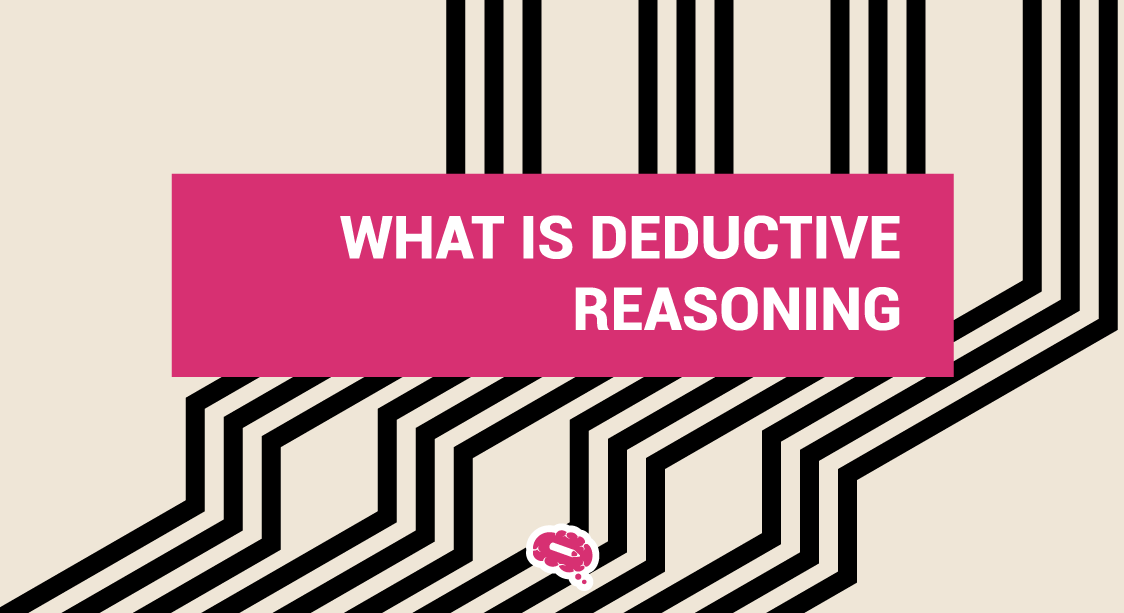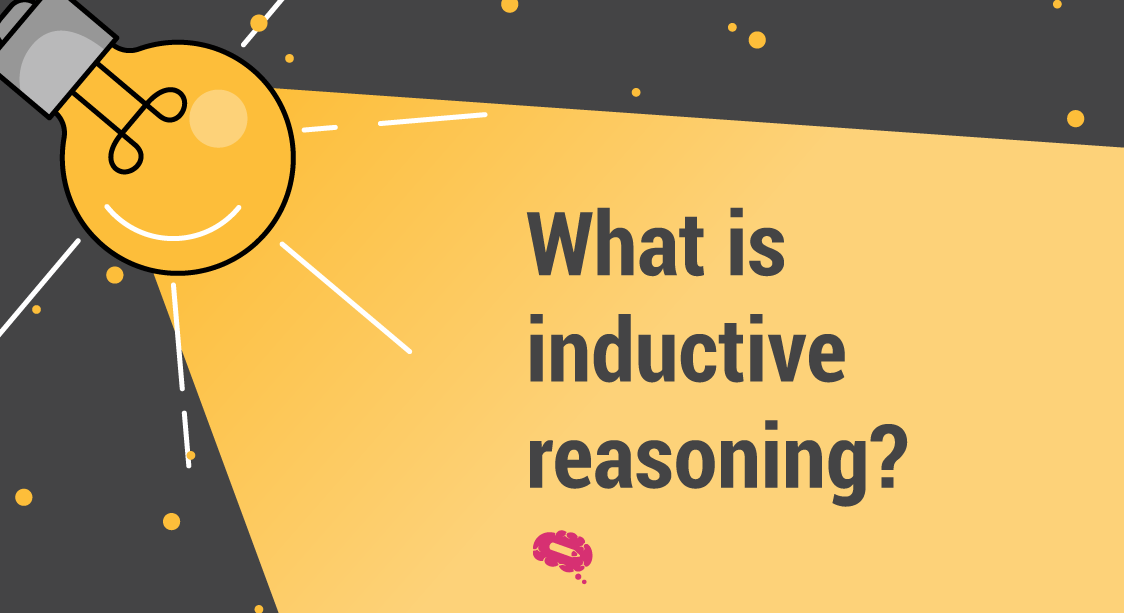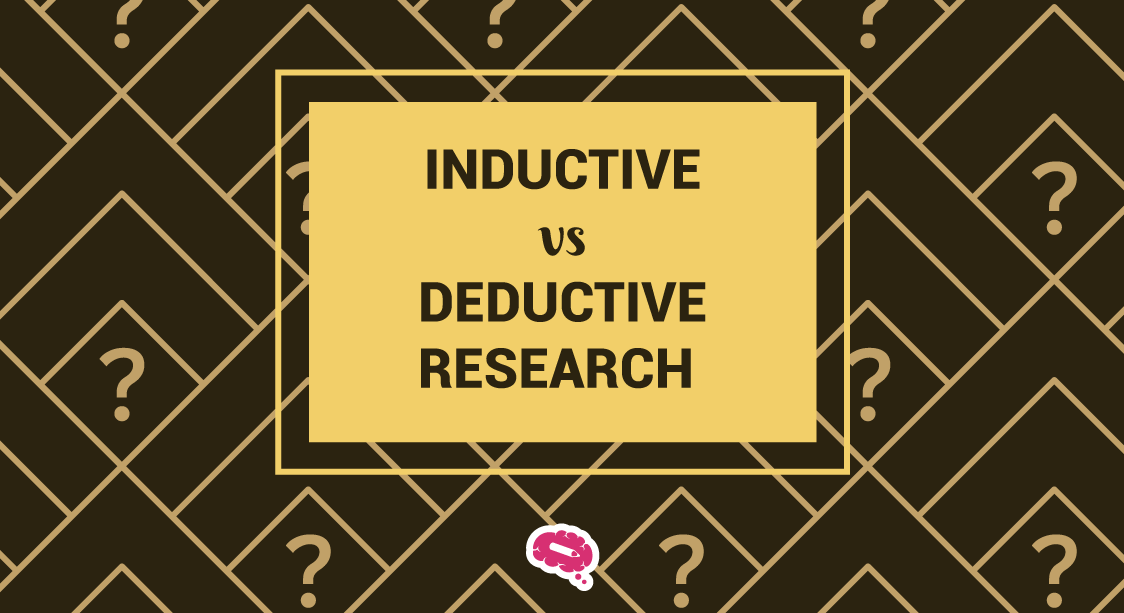Deductive reasoning serves as a major component of logical thinking that is used in problem solving, decision making, and critical analysis. It is a method of reasoning in which basic principles or premises are used to draw particular conclusions or predictions logically. The aforementioned type of reasoning is commonly utilized in subjects such as mathematics, physics, philosophy, and law, where the capacity to draw logical conclusions is required.
Understanding deductive reasoning principles is essential for developing logical thinking skills and solving complex problems. It enables us to recognize and assess the underlying structures and patterns that control the world around us, allowing us to make reasonable judgments and decisions.
The question “What is deductive reasoning?” will be answered throughout this article, which offers an in-depth and comprehensive introduction to deductive reasoning, examining its various types, rules, and applications.
What is Deductive Reasoning?
Deductive reasoning is a type of logical reasoning in which general principles or premises are used to draw specific conclusions.
It is often confused with inductive reasoning, in which conclusions are drawn from particular observations or evidence and may or may not be true even if the evidence is correct.
Deductive reasoning, on the other hand, is a type of reasoning in which the validity of the premises assures the truth of the conclusion, assuming the logic is acceptable. In other terms, it is the process of deriving a specific conclusion from a general rule or statement.
There are two types of statements in deductive reasoning: premises and conclusions. Premises are general statements that are assumed to be true, and the conclusion is the specific statement that is derived from the premises. Deductive reasoning involves moving from general principles to specific conclusions.
For example, consider the following deductive reasoning:
Premise 1: All cats are animals.
Premise 2: Garfield is a cat.
Conclusion: Therefore, Garfield is an animal.
In this example, the first premise is a general statement about all cats, and the second premise is a specific statement about Garfield. By using deductive reasoning, we can conclude that Garfield is an animal because he is a cat and all cats are animals.
Mathematics, science, and philosophy frequently employ deductive reasoning. It allows us to reason logically and systematically, making it a powerful tool for problem-solving and decision-making. However, it is important to note that deductive reasoning relies on the accuracy of the premises. If the premises are false or inaccurate, the conclusion will also be false, even if the logic is valid.
Types of Deductive Reasoning
Now that you know what deductive reasoning is, it’s important to know that there are several types of deductive reasoning, including syllogism, modus ponens, modus tollens, hypothetical syllogism and disjunctive syllogism. Each of these types has a unique structure and serves a specific purpose in logical reasoning.
Syllogism
In deductive reasoning, a syllogism consists of a conclusion and two premises. The conclusion is drawn from the two premises. For example:
Premise 1: All humans are mortal.
Premise 2: Socrates is human.
Conclusion: Therefore, Socrates is mortal.
Modus Ponens
Modus ponens is a form of deductive reasoning where the antecedent of a conditional statement is affirmed, and the consequent is afterward affirmed. For example:
Premise 1: If it is raining, the streets are wet.
Premise 2: It is raining.
Conclusion: Therefore, the streets are wet.
Modus Tollens
Modus tollens is a form of deductive reasoning where the antecedent is first denied and then the consequent of a conditional assertion is refuted. For example:
Premise 1: If it is raining, the streets are wet.
Premise 2: The streets are not wet.
Conclusion: Therefore, it is not raining.
Hypothetical Syllogism
A hypothetical syllogism is a logical argument consisting of two conditional statements and a conditional statement for the conclusion. For example:
Premise 1: If it rains, the ground will be wet.
Premise 2: If the ground is wet, the grass will be slippery.
Conclusion: Therefore, if it rains, the grass will be slippery.
Disjunctive Syllogism
Disjunctive syllogism is a deductive argument consisting of a disjunctive statement and a negation of one of the disjuncts. The conclusion is the affirmation of the other disjunct. For example:
Premise 1: Either it’s sunny or it’s raining.
Premise 2: It’s not raining.
Conclusion: Therefore, it’s sunny.
Rules of Inference
Rules of inference are principles for deductive reasoning which assist in acquiring valid conclusions from a set of premises. The following are some well-known inference rules:
Prominent Inference Rules
Prominent Inference Rules include modus ponens, modus tollens, hypothetical syllogism, and disjunctive syllogism, as explained previously. These rules enable the deduction of valid conclusions from premises.
Fallacies
Invalid conclusions can result from fallacies in reasoning. Deductive fallacies frequently involve a variety of fallacies, such as affirming the consequent, denying the antecedent, and equivocation. False conclusions may result from these errors.
Definitory Rules
Definitory rules establish definitions and meanings of terms and concepts used in the premises. These rules guarantee that the premises are correctly understood and serve to clarify their meaning.
Strategic Rules
Strategic rules are guidelines for constructing valid deductive arguments. These rules include communicating clearly and concisely, refraining from using ambiguous terms and expressions, and making sure the premises are pertinent to the conclusion.
Validity and Soundness
Deductive reasoning uses the ideas of validity and soundness to evaluate the strength and reliability of arguments.
The logical connection between an argument’s premises and conclusion is referred to as the argument’s validity. An argument is valid if the conclusion follows logically from the premises, meaning that it is impossible for the premises to be true and the conclusion untrue. In other words, the validity of the premises assures the truth of the conclusion. However, validity only ensures that the conclusion follows if the premises are true, not that the premises are in fact true.
Given the following argument, for instance:
First premise: Cats are all mammals.
Premise 2: Garfield is a cat.
Conclusion: Garfield is a mammal.
The conclusion must necessarily follow from the premises, so this argument is valid. If the premises are true, then the conclusion must likewise be true. However, the argument is not necessarily sound, because the truth of the premises is not assured. The argument would be unsound, for instance, if it turned out that Garfield wasn’t actually a cat.
Contrarily, soundness describes the total quality of an argument, taking into consideration both its validity and the veracity of its premises. An argument is valid and all of its premises are true if it is sound. In other terms, a strong argument is one that follows logically and is supported by reliable data.
Consider the following argument, for instance:
Premise 1: All humans are mortal.
Premise 2: Socrates is human.
Conclusion: Therefore, Socrates is mortal.
This argument is not only valid but also sound because both of its premises are true. The argument is logically sound and founded on accurate data since the truth of the premises ensures the validity of the conclusion.
To summarize, validity and soundness are crucial concepts in deductive reasoning that help assess the strength and reliability of arguments. Only a sound argument is both logically sound and founded on reliable data, whereas a valid argument guarantees the truth of the conclusion if the premises are true.
Applications of Deductive Reasoning
Numerous disciplines, including science, physics, mathematics, philosophy, law, and engineering, make extensive use of deductive reasoning. It is employed to create hypotheses, prove theorems, build logical instances, assess and analyze complicated systems, and forecast the behavior of materials and technology.
Scientific investigation, legal analysis, and engineering design, as well as the study of mathematics and philosophy, all depend on deductive reasoning. Its significance to human understanding and development cannot be overstated, given the variety and breadth of its uses.
Find Scientific Illustrations
Mind the Graph is an online platform that can be an excellent resource for scientists who need to find the right scientific illustrations for their research work. Scientists can create accurate and aesthetically pleasing scientific graphics more quickly and easily by utilizing Mind the Graph, which can improve the way they convey their research findings.

Subscribe to our newsletter
Exclusive high quality content about effective visual
communication in science.





